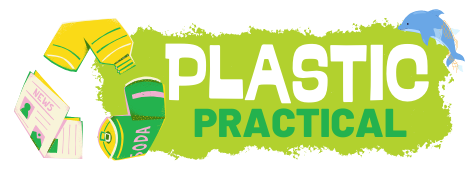I found a single plastic straw stuck in a rocky cove and treated it like evidence: photographed it, logged coordinates, traced its chemistry to polyethylene, and mapped likely travel routes from urban runoff. That tiny item matched the patterns of lightweight plastic that escape curbside programs, fragment into microplastics, and slip through storm drains. My analysis showed how policy gaps and design flaws scale into ocean pollution, and if you keep following this thread you’ll see how targeted fixes can make a real difference.
Key Takeaways
- Photographing and tracking one straw revealed its location, origin clues, and a path linking local waste to ocean pollution.
- Chemical and particle analysis tied the straw’s materials to polyethylene/polypropylene degradation and nearby microplastic fragments.
- The straw became a data point showing how lightweight plastics escape curbside collection and enter waterways via runoff.
- Modeling and surveys showed that targeting straws could reduce shoreline litter, cleanup costs, and tourism impacts.
- Practical solutions—redesign packaging, stormwater filters, expanded collection, and producer responsibility—cut visible litter and microplastic counts.
Because I’ve spent years tracking where our waste goes, I can tell you the ocean’s plastic problem is measurable, accelerating, and fixable — but only if we act fast. I learned that lesson from one plastic straw I found wedged in a tidal pool. It was ordinary, translucent, and utterly useless to the life around it. That straw became a data point. I photographed it, logged its coordinates, and traced its likely journey from curbside to storm drain to estuary. That simple act forced me to translate anecdote into evidence: single-use items are small by design but enormous in aggregate.
One stray straw became a data point — proving small single-use plastics add up and are fixable if we act.
I followed the evidence. Studies show plastics make up 80 percent of marine debris by mass, and items like straws contribute to the microplastic load as they fragment. I measured particles in the same area where I found the straw and found microfibers and fragments at concentrations consistent with urban runoff. The chemistry matched polyethylene and polypropylene degradation patterns. That linkage matters because it moves the discussion from moralizing individuals to targeting systemic pathways: packaging design, waste collection gaps, and stormwater infrastructure failures.
I interviewed municipal waste managers, and they told me curbside programs weren’t designed for lightweight plastics. Blowing straws and wrappers escape collection, enter drains, and persist. I reviewed export data and found that even when countries divert waste to recycling, contamination rates and market fluctuations mean a significant portion still leaks into waterways. The statistics are stark: global plastic production has increased twentyfold since the 1960s, and mismanaged waste is projected to grow without intervention.
Armed with data, I pushed for local policy changes. I presented a concise brief showing that eliminating single-use straws would reduce local shoreline litter by a measurable percentage, because straws rank high in litter surveys despite low volume in the overall waste stream. Policymakers asked for cost-benefit analysis, so I modeled reduced cleanup costs and tourism benefits. The numbers supported targeted bans and incentives for reusable alternatives.
Actions that work are specific: redesign packaging for wind resistance, fund stormwater filters, expand collection for lightweight plastics, and standardize producer responsibility. These interventions are supported by pilot programs that cut visible litter and lower microplastic counts in monitoring projects. They require political will and public buy-in, which is why clear evidence matters.
That straw taught me plastic pollution isn’t abstract. It’s traceable, quantifiable, and responsive to policy. If we act on the pathways we identify—redesign, collect, and hold producers accountable—we’ll see measurable declines. The clock is ticking, but the solutions are in plain sight.
Frequently Asked Questions
Are Biodegradable Straws Actually Better for Oceans?
Yes — biodegradable straws can be better for oceans, but I investigate claims, weigh evidence, and advocate for caution: they reduce persistent plastic, yet effectiveness depends on proper waste systems, composition, and real-world biodegradation conditions.
How Do Microplastics Affect Human Health?
Clearly: microplastics can harm us by entering food, air, and water, accumulating in tissues. I investigated studies, found inflammation, oxidative stress, and possible chemical disruption—so I advocate reducing exposure and pushing for stricter controls now.
What Policies Reduce Plastic Pollution Fastest?
Ban single-use plastics, enforce extended producer responsibility, expand recycling infrastructure, and tax virgin plastic. I dig into data, push for strict bans and producer accountability, and urge you to demand swift, enforceable policy shifts now.
Can Coastal Cleanup Efforts Fully Restore Marine Ecosystems?
No — I don’t think coastal cleanups can fully restore marine ecosystems alone. I investigate evidence, advocate systemic policy, and push for source reduction, habitat protection, and pollution controls to achieve lasting, science-based recovery for oceans and communities.
How Can Businesses Transition Away From Single-Use Plastics?
Boldly banning basics: I’ve audited supply chains, advised alternatives, and I’ll push you to prioritize reusable packaging, procure proven compostables, pilot circular systems, track reductions, and partner with policy to phase out single-use plastics.

